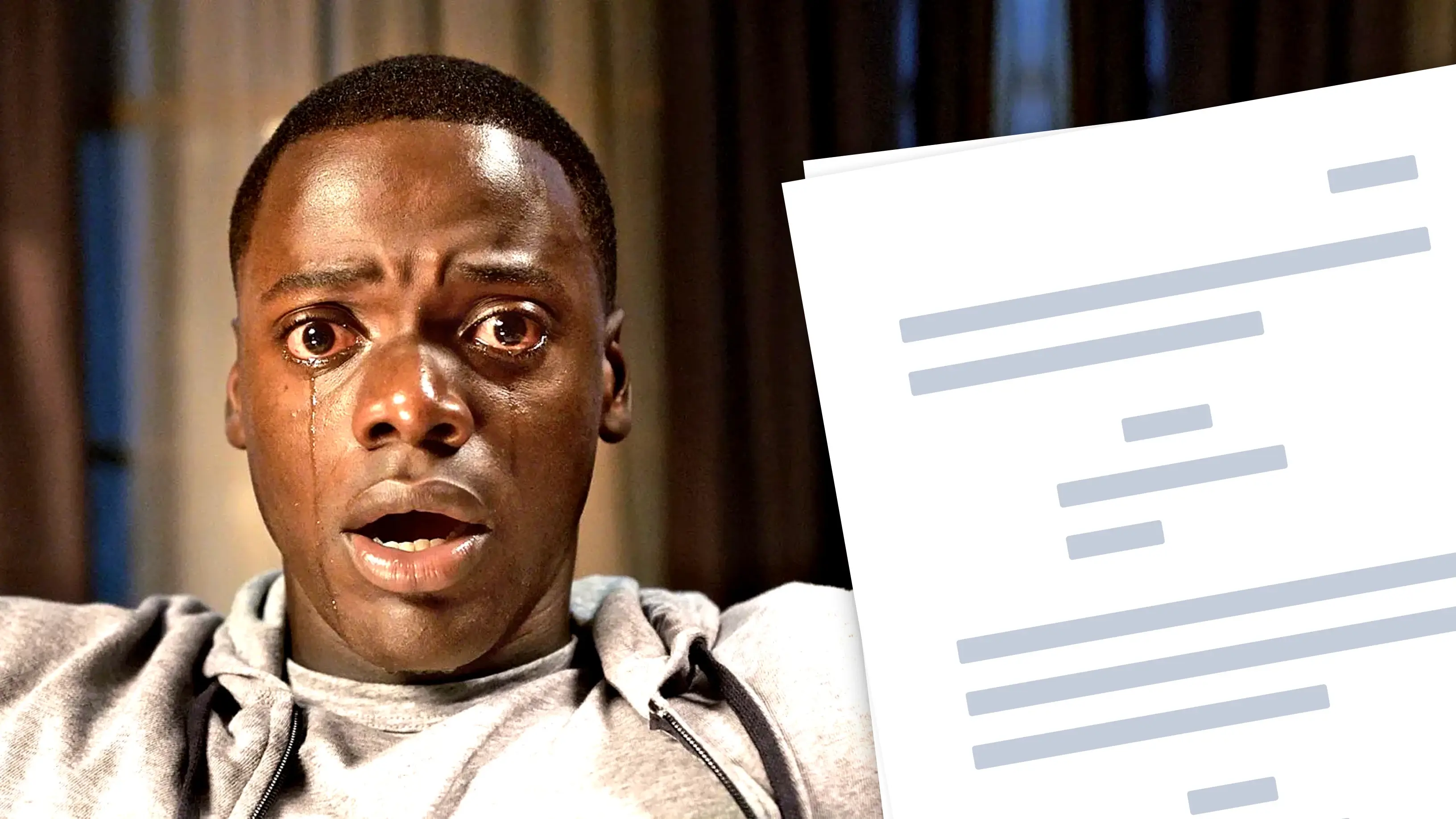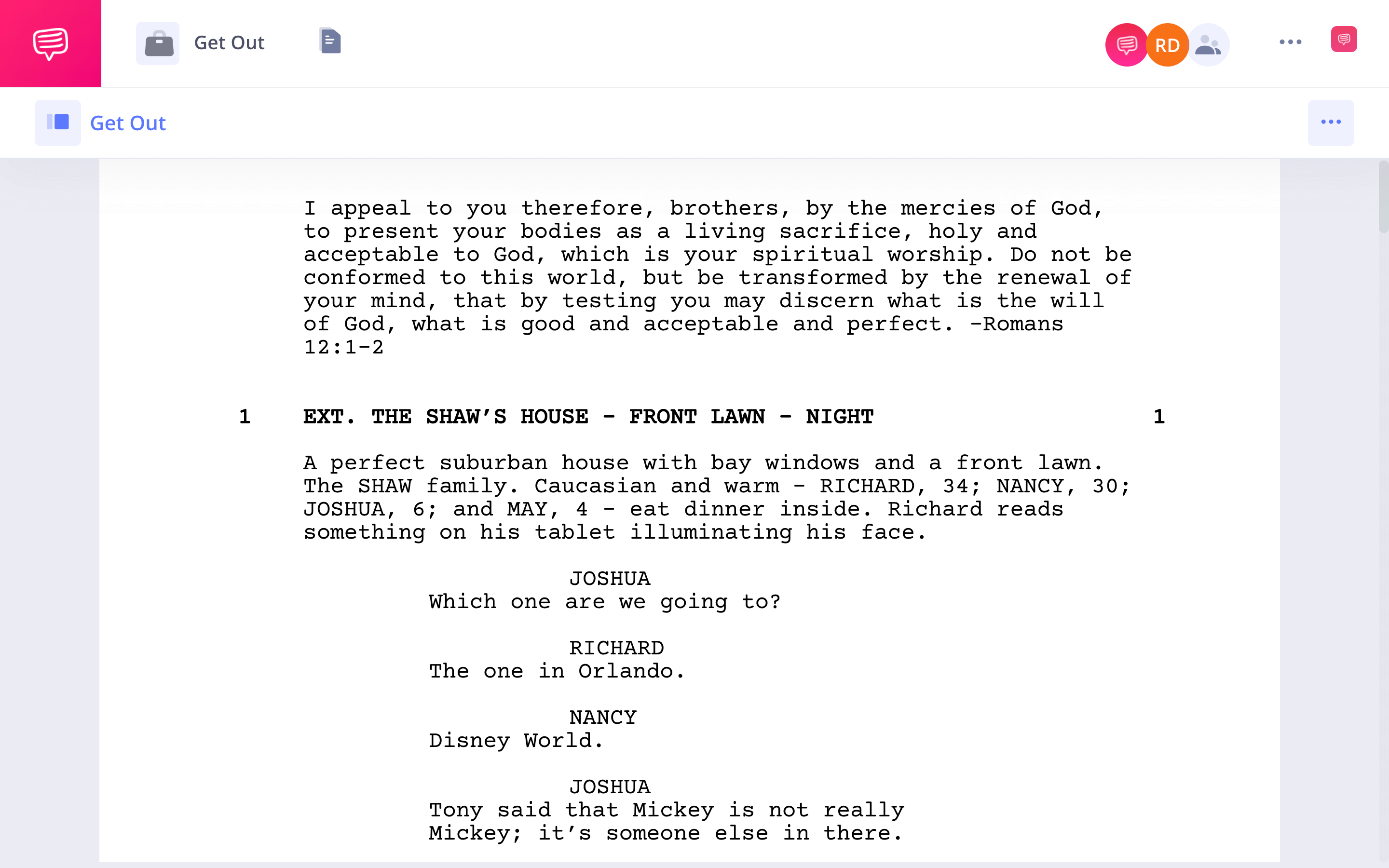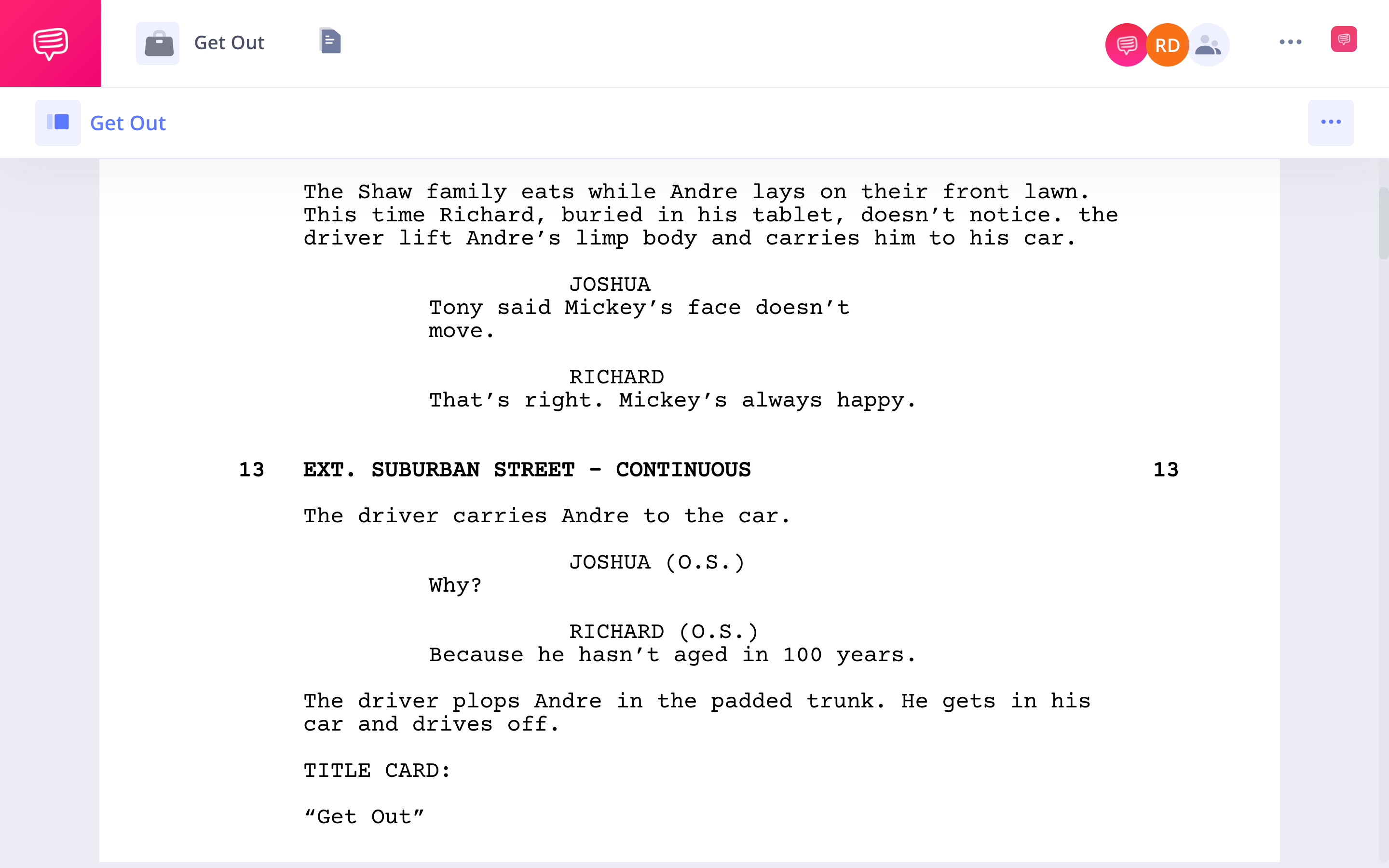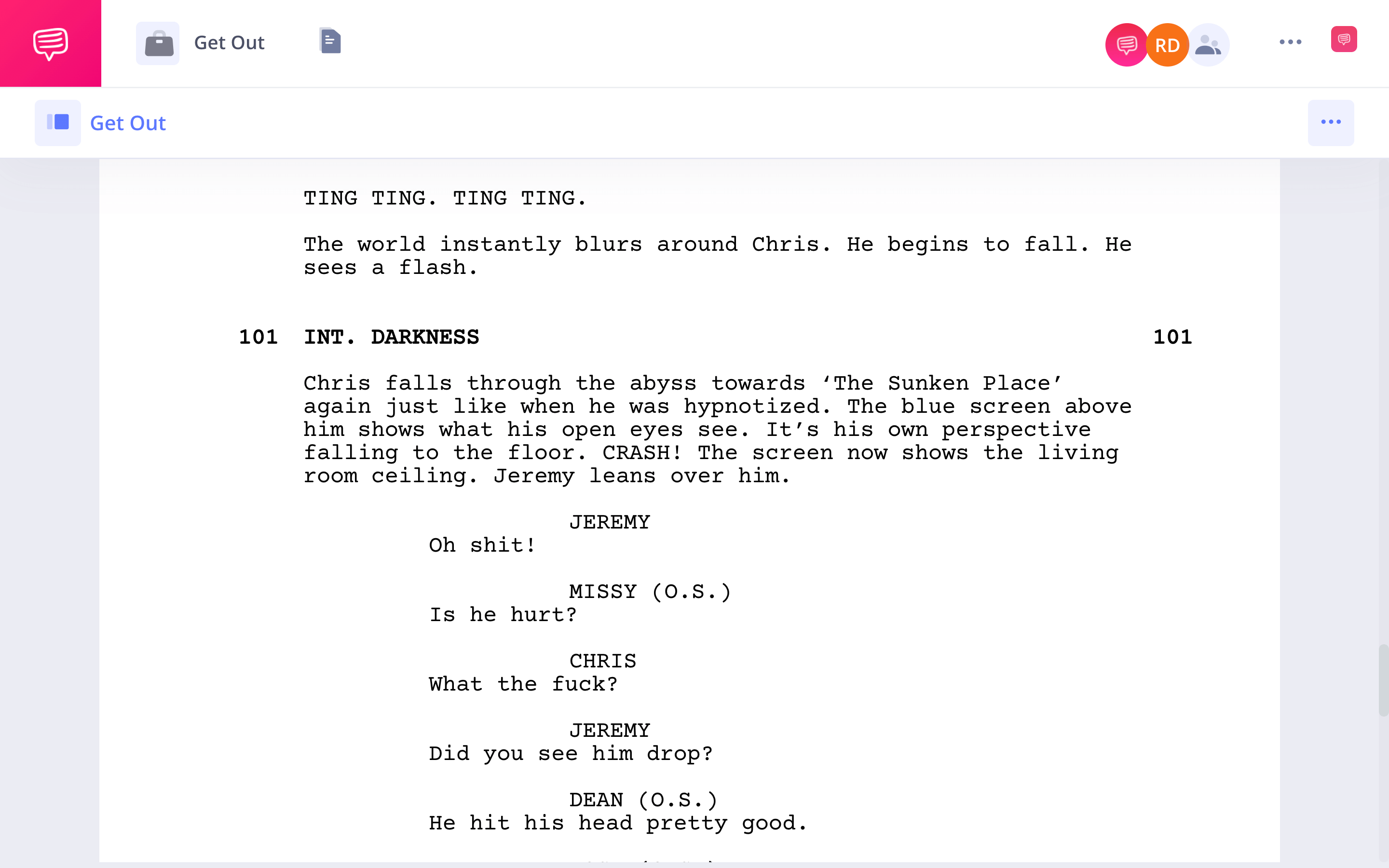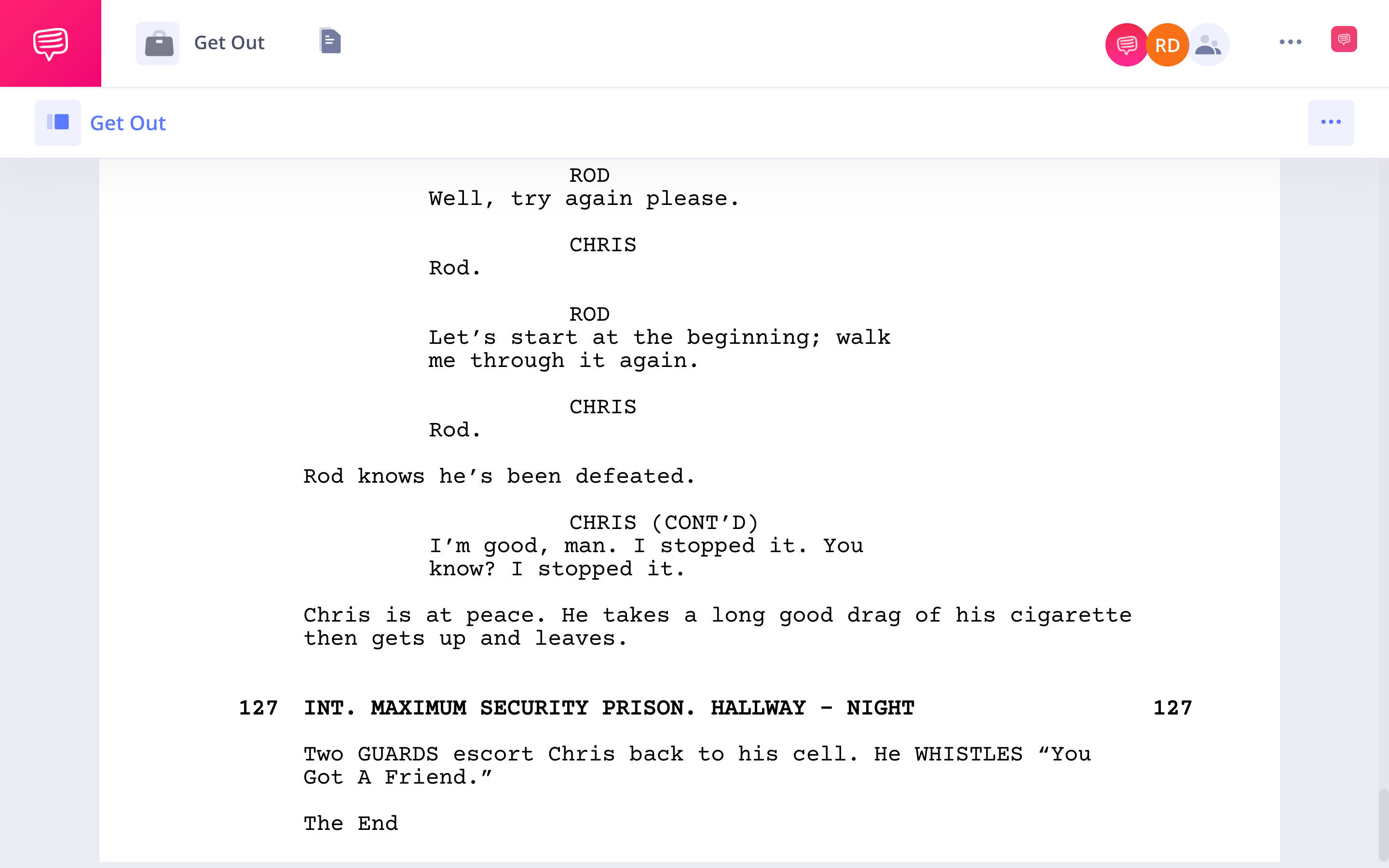Get Out received widespread critical acclaim and numerous accolades for its groundbreaking storytelling, exceptional performances, and powerful social commentary. In many ways, it’s a product of everything great about the horror genre while also reinventing the genre itself. In this blog analysis, we will take a closer look at what makes Get Out such an important film. We’ll examine its themes, characters, and plot in depth, exploring how they all work together to create a truly unforgettable cinematic experience.
WHO WROTE Get Out?
Written by Jordan Peele
Jordan Peele is one of the most innovative filmmakers working today. After making a name for himself in television and comedy sketch writing, Peele made his debut as feature film director with the horror hit Get Out (2017) - a thought-provoking examination of racism and social injustice that earned him Academy Award nominations for Best Picture, Best Original Screenplay (winner), and Best Director.
Since then, he has gone on to critical acclaim for his films Us (2019) and reboot of The Twilight Zone (2020). His unique blend of horror and black comedy elements gives us fresh perspectives on stories that are engaging and entertaining. He continues to explore themes such as identity, injustice, class divisions, race issues and surveillance culture in his works — proving why he is one of the most recognized directors in contemporary filmmaking.
STORY BREAKDOWN
STRUCTURE OF GET OUT SCREENPLAY
What is Get Out about and what is its structure? Here is the story summary for the Get Out screenplay:
Exposition
CHRIS and ROSE travel up to her family's lake house and Chris meets the Armitage family for the first time.
Inciting Incident
Chris learns that the family is gathering for an annual event and becomes suspicious of their intentions.
Plot Point One
Chris discovers from his friend Rod that certain members of the Armitage family practice hypnosis, leading him to investigate further.
Rising Action
Chris learns more about the experiments conducted on black people by the Armitage's, making him increasingly determined to find out what they are planning and escape with Rose.
Midpoint
Upon attempting to discreetly take a picture of the black man with his cell phone, Chris forgets to turn off the flash, causing the man's sudden transformation into a raving and bloodied state as he warns Chris, "Get out! Get the fuck out while you still can!"
Plot Point Two
While packing his belongings, Chris receives a call from Rod who reveals that the man in the photo is their missing friend Dre. However, the phone dies before they can discuss it further and Chris discovers a box of photos revealing Rose's past relationships with multiple black men (including Walter and Georgina). Chris realizes he is not the first African-American to fall victim to her sinister scheme.
Build Up
As Chris and Rose prepare to leave the house, Jeremy blocks their path while Dean and Missy try to convince Chris to stay. Despite Chris's insistence on leaving, Rose refuses to give him the keys, revealing her involvement in this trap. The situation escalates as Jeremy attacks Chris and Missy uses a teaspoon to hypnotize him once again.
Climax
In the climax of Get Out, Chris takes on the Armitages in a desperate fight for his life, culminating in an intense showdown with Rose who taunts him to end her life.
Finale
Chris finds himself with his hands around Rose's neck, unable to take her life. The sound of police sirens draws their attention and Rose cries out for help. However, Rod appears to rescue them and they escape while Rose is left behind, bleeding on the road.
What is GET OUT About?
Establishing themes
Within the horror film genre, opening scenes are often used to introduce the main opposing force of a film. This is typically the monster, the supernatural force, or evil villain. The opening scene may establish a sense of tension or unease through foreshadowing or setting the tone for what's to come.
For example, the first scene may show a character experiencing something strange or unexplainable, or it may take place in an ominous location that suggests danger is lurking nearby.
The opening scene of Get Out establishes the main theme of the film by depicting a young black man walking alone in a predominantly white suburban neighborhood, highlighting the underlying racial tensions and prejudices that exist in society.
Get Out Script PDF Download
This sets the tone for the rest of the movie, which explores issues such as cultural appropriation, racial identity, and systemic racism through a horror lens. Additionally, the use of eerie music and suspenseful camera angles foreshadows the unsettling events that will unfold throughout the film, ultimately culminating in a terrifying and thought-provoking conclusion.
Take a look at the scene to see how it truly establishes the opposing force and themes of Get Out.
Get Out Andre Abduction First Scene
Overall, by establishing these key themes early on, the opening scene of Get Out creates a stong introduction to how the film is able to deliver a powerful social commentary on race relations while also providing audiences with an effective horror experience.
Related Posts
Get Out Characters
Get Out characters and function
The initial premise of Get Out presents itself as a black man, Chris, meeting his girlfriend’s caucasian family for the first time. What makes this so unique is Peele’s use of the premise within the horror genre.
As the audience, our awareness of how Chris is feeling throughout the beginning of the film is subtly written throughout. Awkward conversations with Rose’s parents subtly hold the racial differences at the forefront of each scene. All of these red flags ultimately build up to a sinister plot that while unique, is not the major twist of the story.
The twist, which is a part of any great horror film, is the turn of Rose against Chris. How does Peele lead us astray and hit us with this curveball? He uses Rose to establish trust both with Chris and the audience.
Chris along with the audience are increasingly suspicious of the intentions of the Armitage family. However, Rose is continuously aware of and even upset by the position the family puts in Chris despite their best welcoming efforts. In this essay by Lessons from the Screenplay, we see how Peele uses one scene specifically to win the audience’s trust of Rose.
Get Out • A New Perspective in Horror
This established trust with Rose’s character is ultimately what is used to create an impactful plot twist. Check out the scene of the reveal of Rose’s true character in the Get Out script excerpt below.
Get Out Plot Twist
What makes this plot twist so effective is how it plays on audience expectations. By presenting Rose as a sympathetic character who seems to understand Chris's struggles, viewers are inclined to trust her and believe that she truly has his best interests at heart. This establishes a sense of comfort and security in audiences that is shattered when her true motivations are revealed.
Related Posts
Get Out Ending Explained
Get Out ending vs alternate ending
Like the big plot twist of Rose’s character, the ending of Get Out is constructed through the use of subtle set up. Toward the beginning of the film, Rose and Chris hit a deer as they drive to Rose’s parent’s house.
When they call the cops to report what happened, the police officer asks Chris for his driver’s license despite him being the passenger. Rose, quick to come to Chris’ defense, points out the prejudice of the police officer.
Racist Cop Scene • Get Out (2017
While it the scene underscores the social commentary of the film, it also serves a function within the story’s ending. In many horror films, the calling the cops or the arrival of cops serves as some sort of relief, an arrival of help against a threat. In Get Out ending, however, the arrival of a police car and the flashing of red and blue lights is the exact opposite.
By setting up the threat of the police against black Americans early in the film, their arrival in the final scene of the movie is anything, but relief. The relief of the arrival of help does not come until we see Rod emerge from the vehicle.
Chris Kills Rose • Final Scene
This, of course, was not the original idea of the Get Out ending by Peele. The alternate ending, shows a much darker version of what would have played out had the arrival of the police vehicle been actual police.
In the Get Out screenplay we see the darkness behind the ending Peele had originally envisioned.
Alternate Get Out Ending
In the alternate ending, Chris is not saved by Rod and instead ends up being arrested by the police after killing Rose. This bleak conclusion highlights the ongoing issue of police brutality against Black people in America, and suggests that even when a Black person defends themselves against violence from white people, they are still at risk of being unjustly punished.
Overall, while some viewers may prefer the original ending for its more optimistic resolution, others may find that the alternate ending adds an extra layer of complexity and nuance to Get Out. By presenting two different possibilities for how things could have ended for Chris, it encourages audiences to think critically about issues surrounding race relations in America and consider multiple perspectives.
One of the key strengths of Get Out is its ability to blend together different film genres and tones seamlessly. It's part horror movie, part social commentary, and part psychological thrillerƒ — yet it all fits together perfectly. This creates a unique viewing experience that keeps audiences engaged from start to finish.
Ultimately, what makes the Get Out script so important is its willingness to tackle difficult subject matter head-on. By addressing issues of race in America in such a direct and unflinching way, it forces audiences to confront uncomfortable truths about themselves and their society.
It's this boldness and honesty that has made Get Out not just a great horror movie, but an important cultural touchstone as well.
Related Posts
UP NEXT
Read and download more scripts
Get Out made audiences and filmmaker reimagine an entire genre. If you want to continue reading screenplays, we have similar titles like Harry Potter & The Philosophers Stone, Game of Thrones, and Avengers in our screenplay database. Browse and download PDFs for all of our scripts as you read, write and practice your craft to become the next great screenwriter.
